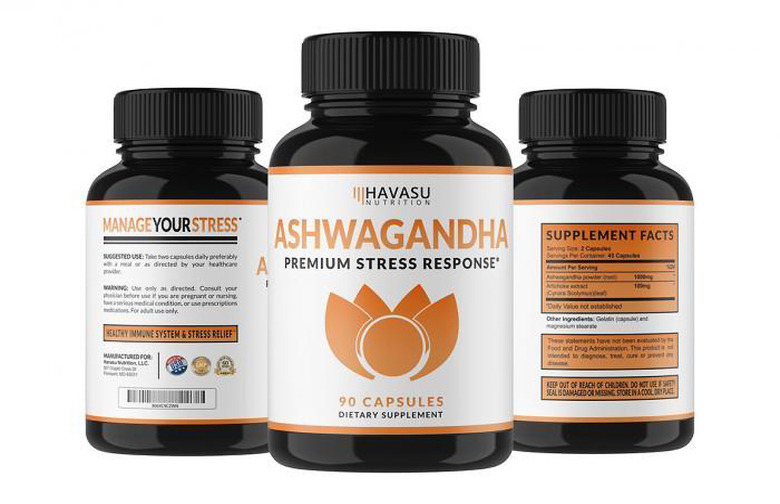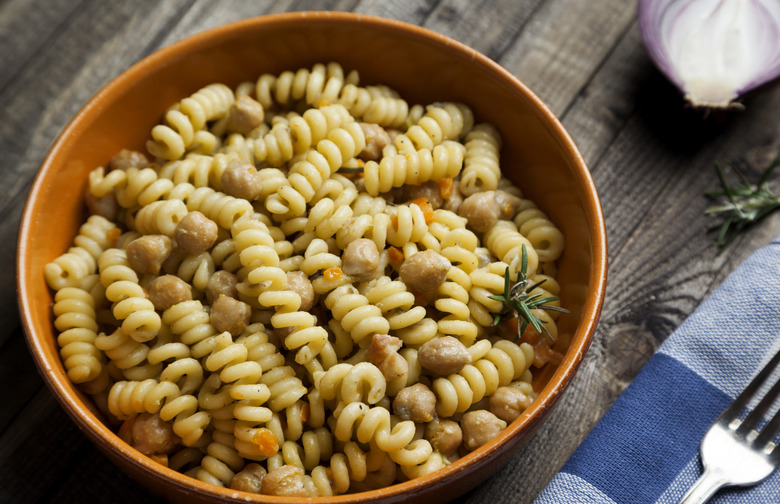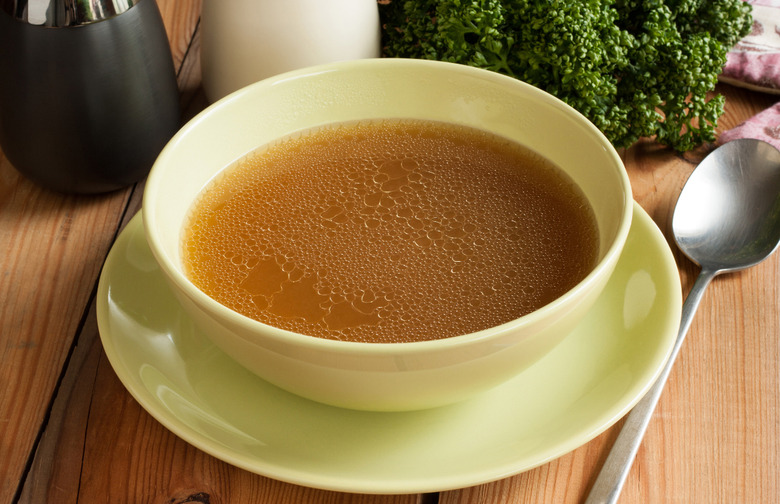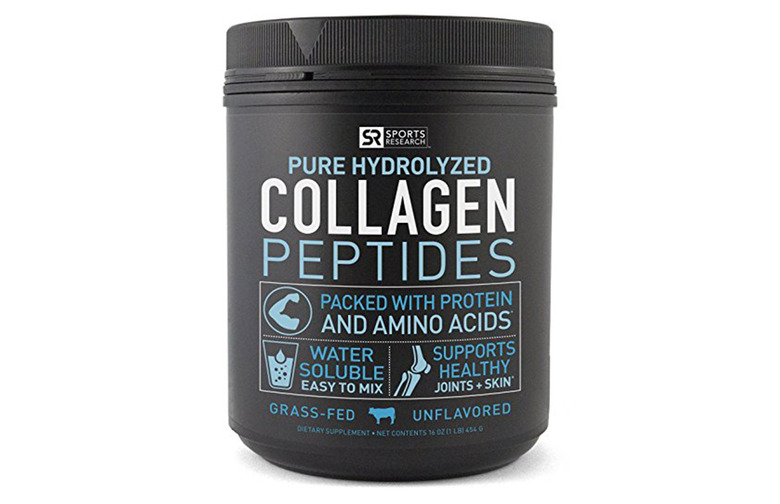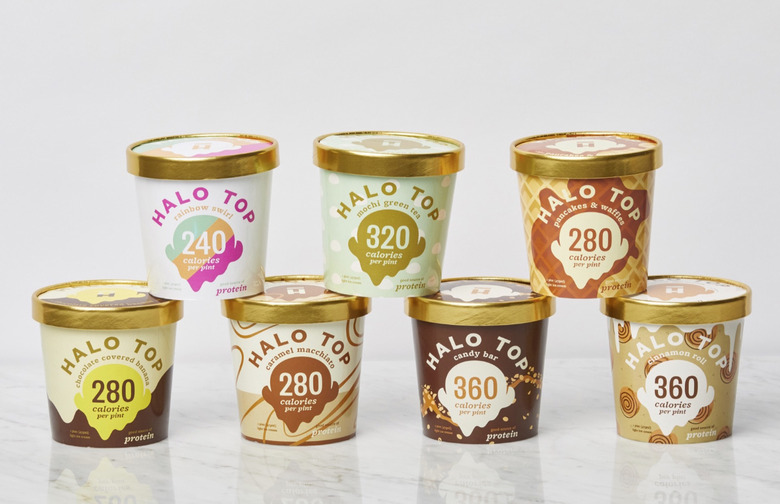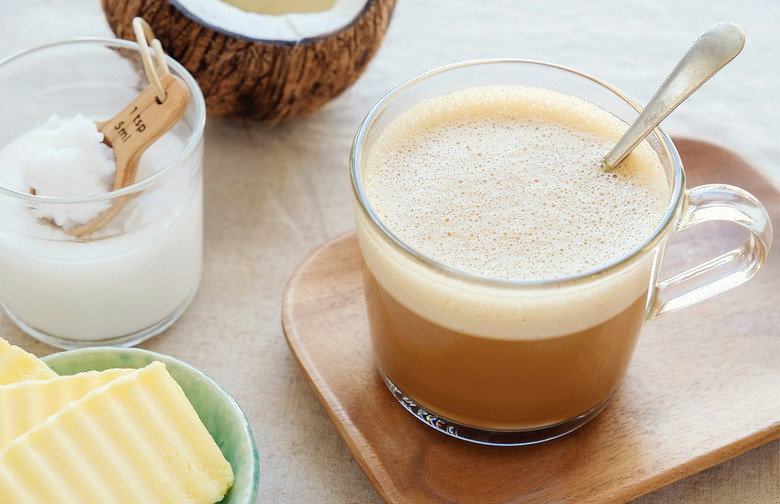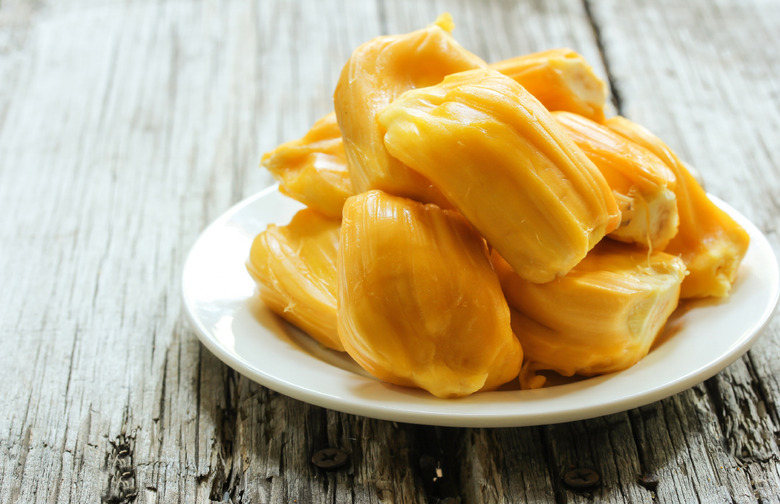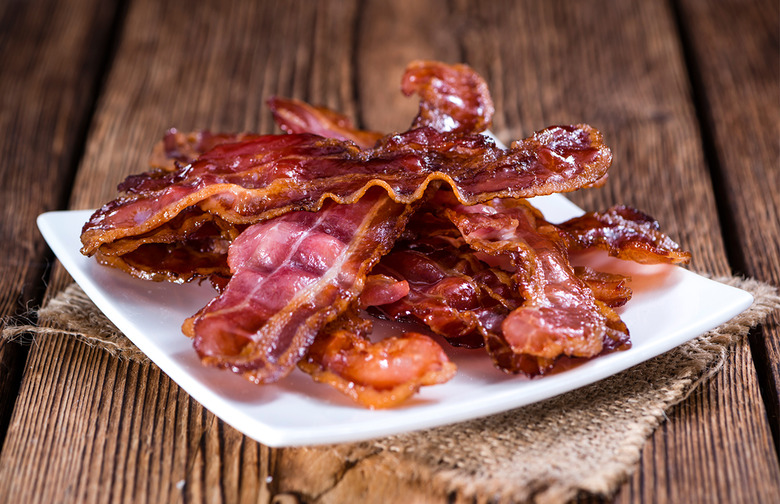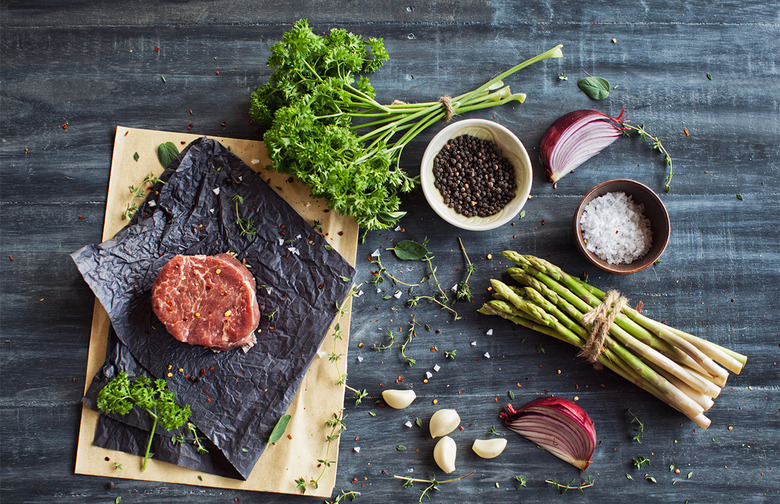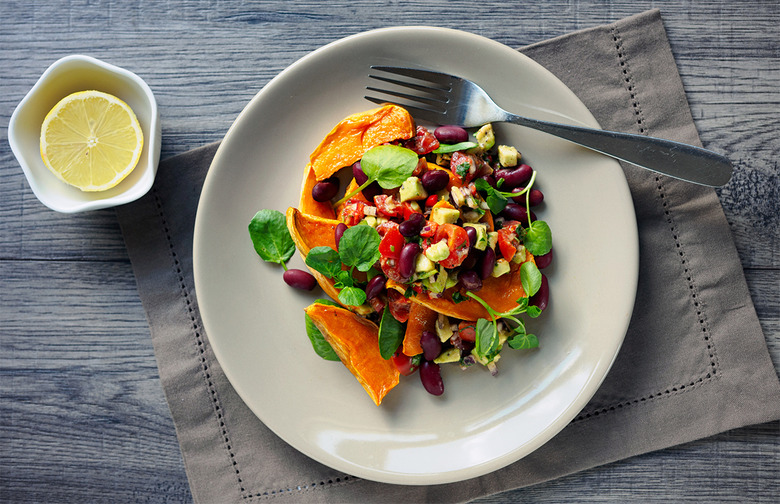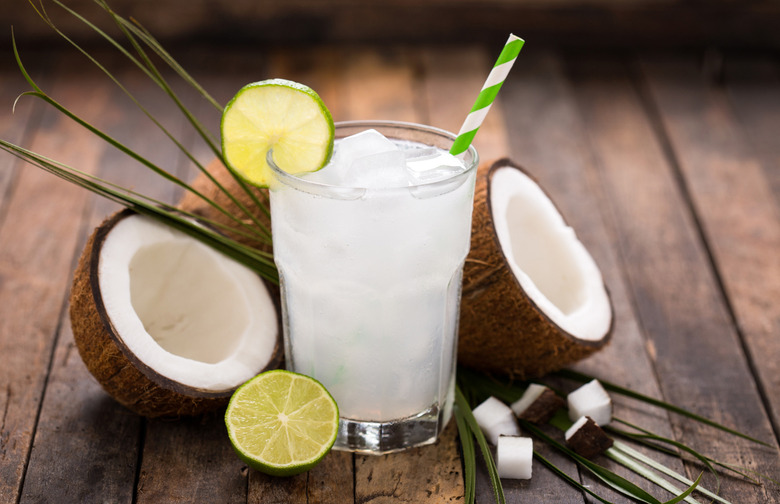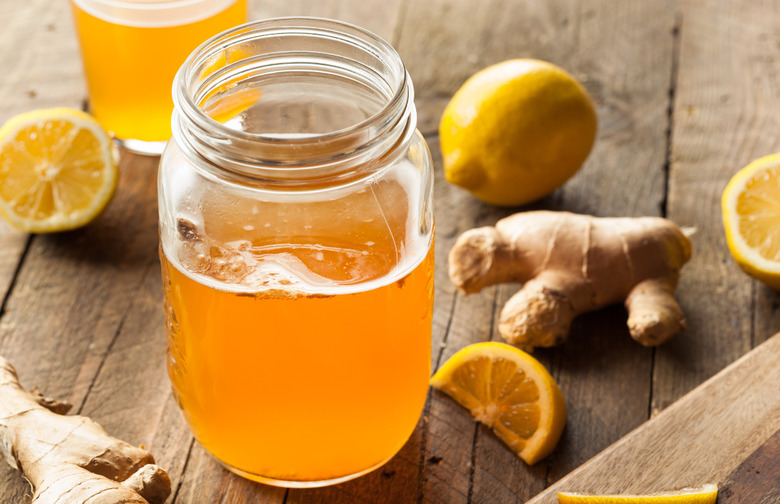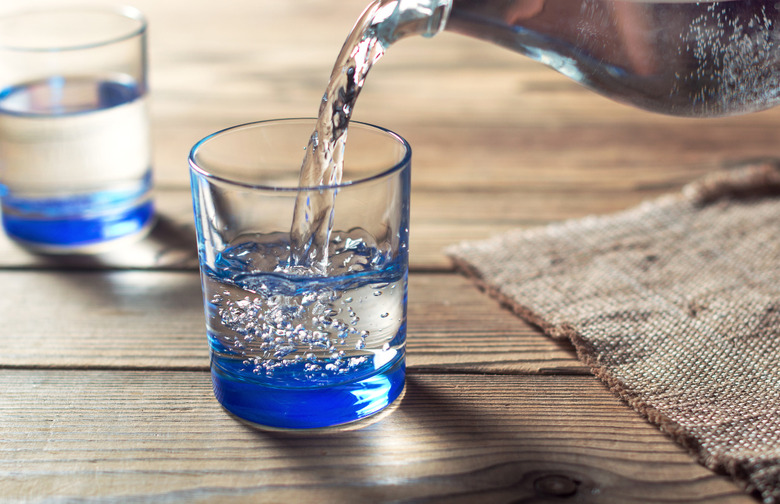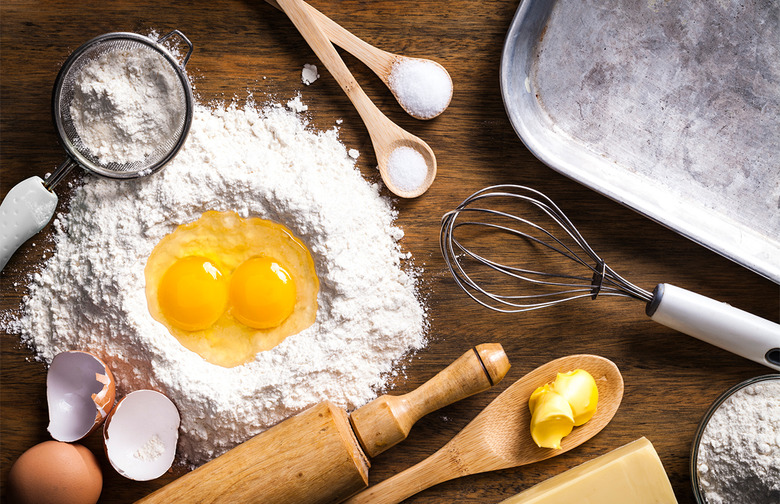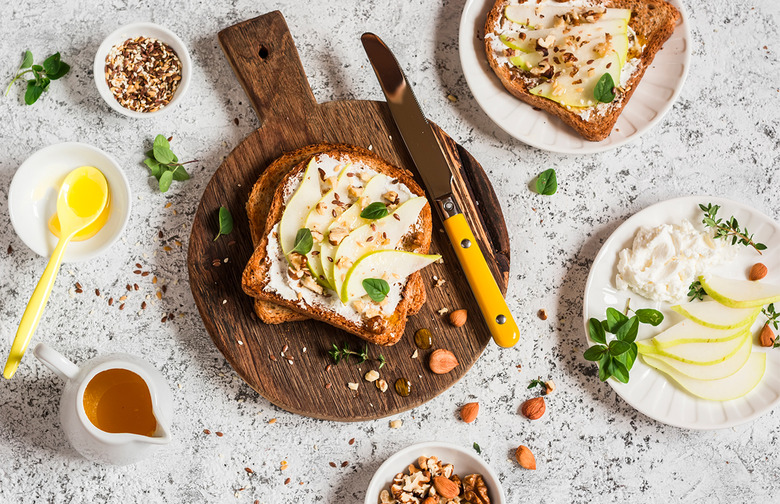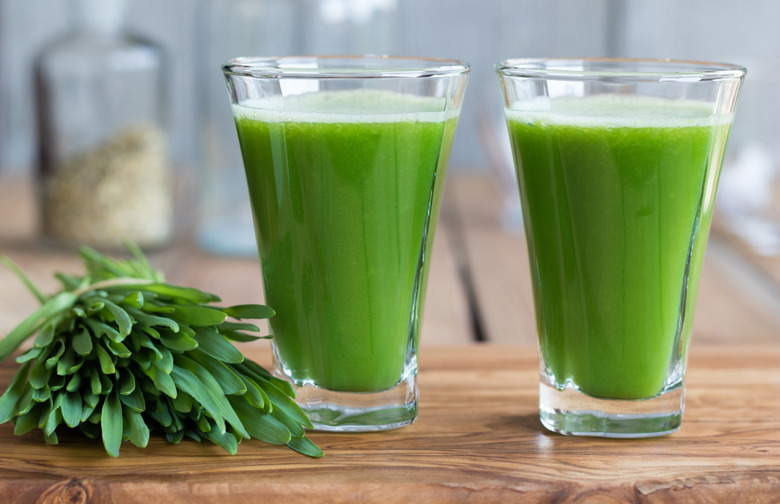The Biggest Health Trends Of 2017 Slideshow
2017 was a big year for wellness. The truth about carbs was revealed, people got creative in their low-sugar kitchens, and everyone stopped trying to limit their fats (though maybe that last one has gone a little too far).
Instagram is transforming the food scene, and more than ever you can track the progress of wellness conversations on a simple social media app. Whenever a new diet trend arises, there's a hashtag. Whenever a new café pops up with an innovative use for avocados, Instagram is already on it. The new Instagram story function has allowed bloggers and influencers to detail their daily practices and rituals to devout followers, teaching people how to make their own collagen waffles and protein oats.
Through this platform, alongside many others, we've assessed which trends were really popping this year. Health and fitness are changing all the time — it can be tough to keep up. But now that 2017 has very nearly run its course, we can identify the biggest health trends of this year.
Adaptogens
These new wellness elixirs are herbs and other plants with medicinal properties. Many are meant to reduce stress and balance hormones naturally. Stress has been on everyone's brain this year, especially in the wellness space. Research has erupted showing the many health effects of having too much stress in the body, so these herbs have made a breakthrough in health conversation. Reishi mushrooms, ashwaganda, and ginseng are some of the most popular.
‘Better’ Carb Swaps
The "good carb, bad carb" debate was in full swing this year as the anxiety around gluten continued. People strayed away from white and wheat bread and opted instead for "healthier" options such as chickpea pasta, sweet potato toast, and paleo nut bread. Of course, now the prevailing research is showing that (for the vast majority of people) gluten was never harmful in the first place. But the trend has stuck, regardless.
Bone Broth
Last year, no one had even heard of bone broth, but this year there are entire trendy cafés dedicated to it. This warm, savory beverage is no longer just for cooking. Now, people are drinking it plain, fawning over the health benefits the rich drink has to offer. Health gurus rumor that the broth can boost bone health, immunity, gut health, and sleep.
Collagen
People are adding this stuff to everything. We're not exaggerating — to-go packets of flavorless collagen have transformed on-the-go nutrition, so people can add collagen to their coffee, soup, smoothies, and pretty much anything else. Collagen cupcakes are a casual thing on Instagram, and influencers everywhere claim to experience miraculous benefits after adding it to their diets. They claim to feel fuller for longer, have stronger hair and nails, and even rid themselves of constant cravings. It's amazing what a little protein can do.
Dessert Alternatives
People have gone wild with what Whole 30 participants call "sex with your pants on," or #SWYPO. Basically, it's what happens when you try to replace real dessert with something that's clearly much less satisfying.
Faced with all the warnings about sugar and carbs, people tossed out their regular cookies, cake, and brownies. Instead, people in the wellness world have transformed desserts into low-sugar, all-natural imitations of your usual suspects. Think sugar-free cookies, raw paleo cheesecake, and low-calorie ice cream. Halo Top, a diet-friendly ice cream replacement, surpassed every other ice cream company in sales this year.
Essential Oils
These aromas have been popularly used in massage therapy and other spa treatments for ages, but at-home wellness has caught on to their benefits this year. Essential oil diffusers and subscription services are becoming popular for those interested in stress relief, mental health, and getting more sleep. The hormonal benefits are appealing to many health enthusiasts, as well, and many have gotten creative with how to use these blends. Cooking with essential oils has been revealed to have benefits, as well, and many chefs and food bloggers have begun to try it.
Food Intolerances
At-home food intolerance tests took to blogs and Instagram to market their product after they were outed as fake by more than a few journalists. Influencers who were already involved in food elimination diets advertised the products and gave them the momentum they needed to continue selling.
These tests are just one of the many ways people have taken to self-diagnosing food intolerances, and the problem has gotten so bad that there's rarely a dinner party where at least one person isn't something-free. Gluten-free, dairy-free, soy-free... The list of apparent intolerances goes on and only grows as people hastily attribute stress-induced stomachaches to actual dangerous allergies.
High-Fat Lattes
Dave Asprey, the mastermind behind Bulletproof, popularized the first high-fat latte with his bulletproof coffee. Essentially, the coffees are a blend of your typical espresso with coconut oil, butter, and dairy-free milk. He defended his creation with the assertion that these fats have many health benefits, an iteration of the healthy fat trend that made it to beverages.
This trend paved the way for golden milk, bulletproof matcha lattes, and many more drinks that are loaded with extra fat. Only in 2017 would people think it was normal to roast oil-free vegetables yet eating them with a side of a butter beverage.
Jackfruit
Vegans rejoiced when this plant-based, meaty alternative to shredded chicken and pork hit high-end grocery shelves. It's affordable and mimics the texture appropriate for tacos, stews, and other meat-filled dishes. It's been described as a miracle food for helping mitigate climate change while providing vitamins, minerals, and antioxidants.
Ketogenic Diet
Everyone and her mother will by now have heard of the popular keto diet. Described as a "lifestyle" rather than a diet (though it definitely is one), "going keto" means cutting out virtually all the carbs from your day and replacing them with high-fat foods. When deprived of carbohydrates, your body is more likely to go into ketosis, a state in which it resorts to using fat for fuel that produces ketones. These ketones are rumored to lower your blood sugar, improve mental focus, and regulate hunger. However, many report feeling sluggish, experiencing reduced athletic performance, feeling their digestion is disrupted, and developing a disordered relationship with food.
Some companies have tried to replicate ketosis for people who don't want to cut out carbs, but these drinks have attracted some skepticism. The keto diet doesn't seem to be going anywhere anytime soon, especially when the number of products and recipes to help those who are on the diet stick to it are increasing by the day.
Minimal Ingredient Products
Once people discovered that calories weren't the enemy when it came to finding nutritious foods, they took to scrutinizing the ingredients labels of products instead of the calorie count. In response, companies began producing products with simple ingredients made of real food. The simpler the better, many of them believe. Some nutrition bars have as little as three ingredients in their recipe — making for relatively bland-tasting bars, but undeniable powerhouses of nutritional value. The real question is whether people will continue to believe a three-ingredient protein bar is worth $6 per serving when they could just eat the cashews, honey, and protein separately for much cheaper.
Paleo Diet
The paleo and the keto diet are two sides of the same coin. Spinoffs of the low-carb, gluten-free fads of years past, both diets demonize refined carbohydrates and opt instead for different sources of calories. The paleo diet focuses on meat, fruit, nuts, and vegetables, claiming to imitate the diets of our human ancestors.
By following the plan, paleo dieters end up eating large amounts of protein and unsaturated fats alongside large amounts of fiber and small amounts of carbohydrates. Fruit intake is limited and is the primary source of carbs.
This diet is also popularized as a "lifestyle" — though, again, it's 100 percent a diet — and is popular among yogis, health enthusiasts, and even parents. No grains are allowed, no yogurt, no cheese, and no beans. We're bummed out just thinking about it.
Plant-Based Diets
Whether it's for your health or environmental activism purposes, everyone's been going plant-based. Celebrities like Ne-Yo, Jason Derulo, and Craig Robinson have all gone vegan and thousands of Americans have made the swap, as well.
The fearmongering film What the Health scared people into eliminating eggs from their diet with the questionable claim that eating an egg is worse than smoking cigarettes. But regardless of whether that film held any ground in reality, people have been feeling the benefits from eating plant-based. Even elementary schools have jumped on the bandwagon, serving only meatless options at lunch.
Plant Water
Water wasn't enough to hydrate people this year. Instead, other more hydrating drinks have made their way onto shelves. Maple water, watermelon water, chlorophyll water, and other plant-infused varieties of nature's favorite beverage have made it onto the shelves and seriously succeeded at gaining public attention. The drinks flaunt health bonuses like electrolytes, antioxidants, and other nutrients that boost the benefit of just drinking water.
Probiotics
There's been so much buzz about gut health this year. Most of it is total BS, but the health conversation did get something right — we do have symbiotic gut bacteria, and when we feed them well there are health benefits. These bacteria can be ingested in foods with probiotics, such as kimchi or yogurt, or fed with nourishing whole foods as part of a healthy diet.
There are many who have taken the trend too far — refusing to eat sugar because it feeds "bad" gut bacteria, eliminating food groups for invented intolerances, and other drastic solutions to minute problems such as bloating and indigestion. But hopefully in the years to come, research will help clear the fog around this trendy health topic.
Sobriety
Drinking just isn't cool anymore, according to millennials. Staying in is the new going out. Hygge, a Scandinavian concept that encourages practices like snuggling at home with a cup of warm tea, has people morphing into homebodies and leaving binge drinking behind.
Sugar Detoxes
The terror around sugar is growing. While moderate amounts of sugar intake have never been proven harmful by any study, excessive amounts of sugar can lead to insulin resistance, cancer, and other serious health problems. In a nationwide knee-jerk reaction to these discoveries, many have taken to eliminating sugar from their diets entirely, at least for a time. Sugar detoxes sponsored by nutritionists and health coaches are blowing up on social media. The idea is that by eliminating sugar, you can "reset" your cravings and eliminate your sugar addiction — which is a total myth, anyway, but alas.
Sugar-Free Baking
Sugar-free desserts, no-fruit smoothies, and other solutions to sweets cravings are getting creative in how to be compliant with the sugar detox mindset. The effort to keep eating cookies while detoxing has gotten a bit desperate, resulting in an explosion of sugar-free desserts on the internet. There are entire books of recipes for no-sugar desserts now. But are these desserts really all that healthier than just indulging in a cookie and moving on with your life?
Toast
People are acting like this is the best thing since sliced bread. It's gone far beyond avocado toast; finally finding creative ways to use their favorite carb. Sometimes it's plain old bread — but sweet potato toast, paleo bread toast, and other low-carb versions of your classic buttered loaf have been more popular than the original. Toppings like yogurt, granola, chopped up snack bars, and other unexpected choices have replaced just butter and jam. The new inventiveness people have felt with the trend has allowed #toasttuesday to surpass even #tacotuesday on Instagram every week.
Virtual Reality Fitness
At-home workouts never have to be boring again. Technology has turned your workout into a video game. Bike races, dance parties, outdoor jogs, and so much more are possible with the use of a virtual reality headset you wear while you move in your living room. The headsets can connect you with other fit people, trainers, and experts to give you a community alongside your indoor experience.
Wellness Shots
Forget tequila shots — though they do have some health benefits. The new trendy shot to take is a wellness shot, like wheatgrass, turmeric, or matcha. There are different shots blended for different health needs. If you're sick, for example, you could take an immunity-boosting shot. If you want to reduce inflammation, there's a shot for that, too. The tiny drinks are sold at juice shops and normally sell for around $5 each. We're not really sure how we feel about this one — we'd rather eat our turmeric instead.

